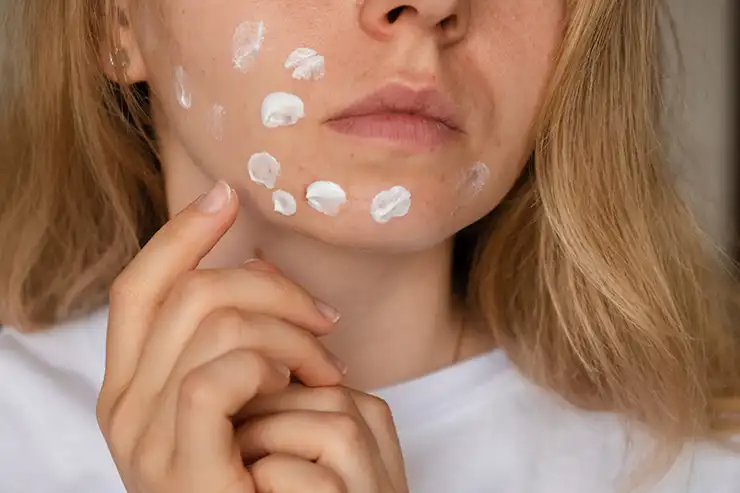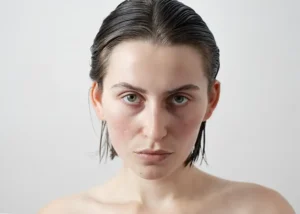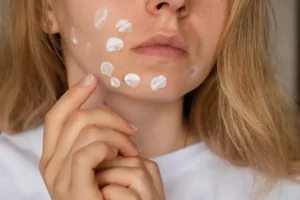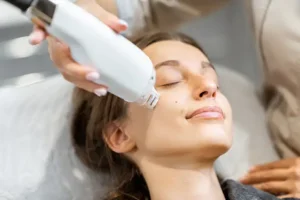What Is Benzoyl Peroxide?
Benzoyl peroxide is one of the most trusted acne-fighting ingredients in dermatology. It has been used for more than 50 years to treat breakouts effectively, and it’s still recommended today by dermatologists around the world.
Unlike many ingredients that target only part of the problem, benzoyl peroxide does three things at once:
-
Kills acne-causing bacteria (Cutibacterium acnes)
-
Reduces inflammation
-
Helps unclog pores and prevent new breakouts
It works by releasing oxygen into the pores, creating an environment that bacteria can’t survive in. This makes it unique among acne treatments because it’s not an antibiotic, so bacteria can’t develop resistance to it.
Why Dermatologists Still Love It
Even with all the modern treatments available, benzoyl peroxide remains a top recommendation for one reason — it works.
It can treat mild to moderate acne on its own or be combined with other ingredients for stronger results. For example, pairing it with adapalene (as in Epiduo) or clindamycin (a topical antibiotic) can help treat both bacteria and clogged pores simultaneously.
Benzoyl peroxide also works quickly. Many people notice fewer inflamed pimples and smaller breakouts within two to three weeks of consistent use.
Choosing the Right Strength
Benzoyl peroxide comes in several concentrations — usually 2.5%, 5%, and 10%. More isn’t always better.
Studies show that lower concentrations, like 2.5%, can be just as effective as higher ones while causing less dryness and irritation.
If you’re just starting, a gentle 2.5% gel or cleanser is often the best place to begin.
Common Mistakes and How to Avoid Irritation
Benzoyl peroxide has a reputation for causing dryness, redness, or flaking, especially at the beginning. These side effects are usually temporary and manageable with the right approach.
Here’s how to minimize irritation:
-
Apply a pea-sized amount once a day at night
-
Use it after moisturizer to reduce dryness
-
Start with every other night until your skin adjusts
-
Avoid combining it immediately with retinol or exfoliating acids
Also, remember that benzoyl peroxide can bleach fabrics. Let it dry completely before touching towels, clothes, or pillowcases.
New Formulations Make It Easier to Use
Older benzoyl peroxide products used to be harsh and drying, but newer versions are much gentler.
Today’s formulations include:
-
Micronized particles that absorb better and cause less irritation
-
Water-based gels and creams that spread evenly
-
Combination treatments like adapalene plus benzoyl peroxide (Epiduo) or clindamycin plus benzoyl peroxide (Duac)
These improvements make it possible to use benzoyl peroxide more consistently without the common “tight” or flaky feeling older products caused.
Who Should and Shouldn’t Use It
Benzoyl peroxide is ideal for people dealing with inflamed pimples, papules, and pustules. It’s less effective for blackheads and whiteheads unless combined with other treatments.
People with very dry or sensitive skin should start slowly and use it only a few times per week. If you experience burning, itching, or swelling, stop immediately and switch to a milder formula or consult a dermatologist.
Pregnant and breastfeeding individuals should check with their doctor before use, as research is limited in those cases.
FAQs About Benzoyl Peroxide
How fast does benzoyl peroxide work?
You can often see improvement within 2 to 3 weeks, but it can take up to 8 weeks for full results.
Can benzoyl peroxide cause purging?
Not exactly. It doesn’t increase cell turnover like retinoids do, but you may notice mild irritation or temporary flaking at first.
Is benzoyl peroxide safe to use every day?
Yes, once your skin adjusts. Start every other night, then increase as tolerated. Always moisturize afterward.
Can benzoyl peroxide and retinol be used together?
They can, but not at the same time of day. Use benzoyl peroxide in the morning and retinol at night, or alternate nights.
Benzoyl peroxide remains one of the most effective, affordable, and proven acne treatments in skincare. It kills bacteria fast, helps reduce inflammation, and prevents new breakouts when used correctly.
Modern formulations have made it easier to tolerate, meaning you can get powerful results without excessive dryness. Whether used alone or with retinoids or antibiotics, benzoyl peroxide continues to be one of the most reliable tools in the fight against acne.





